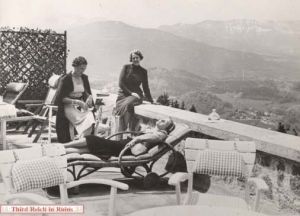Life in the shadows
As I receive feedback from book-discussion groups and readers, I reflect on how much the world’s continuing hunger to “understand” Hitler is aided by understanding more about Eva Braun.
Much of what’s conveyed about her (huge amounts of it inaccurate) has been based on presumed understanding about him. But the reality is that more complete information about her can help us better understand more about why Hitler, despite the evil he represents (or perhaps because of it), has occupied collective consciousness for more than 70 years. 
Far from attempting to redeem her, however, The Munich Girl follows along patterns of how Braun’s life in Hitler’s shadow, which ended alongside him when she was 33, is emblematic of what many women have done, and still do, in a world still hobbled by inequality. Unable to enact their own potential in a direct way, they resort to doing so from the invisible sidelines and background.
In Eva Braun’s case, that public invisibility lasted the entire 16 years she spent with Hitler. 
As one reader puts it: “Women, even well-educated women such as [Anna], the novel’s protagonist, are groomed to give up their lives for the ‘larger’ missions of their husbands and lovers. … one of the many ways in which the feminine aspect of humanity is subjugated, Fascism being the most extreme form.”
 The story of The Munich Girl is about many things beyond Eva Braun and the time of the war in Germany. It’s about how women share our lives with each other, the power of our friendships, and the way we protect each other’s vulnerabilities, perhaps as part of how we begin to gain compassion.
The story of The Munich Girl is about many things beyond Eva Braun and the time of the war in Germany. It’s about how women share our lives with each other, the power of our friendships, and the way we protect each other’s vulnerabilities, perhaps as part of how we begin to gain compassion.
So that our world can, too.
Find more about The Munich Girl at:
https://www.amazon.com/Munich-Girl-Novel-Legacies-Outlast-ebook/dp/B01AC4FHI8/






